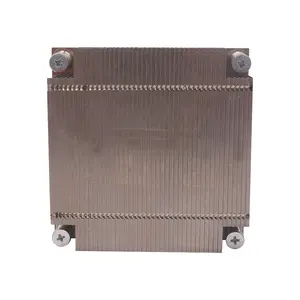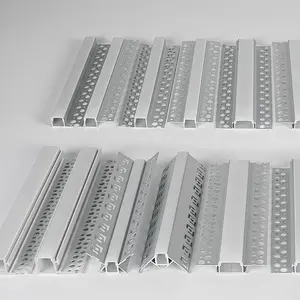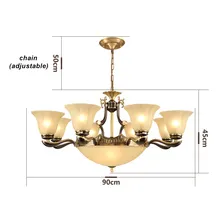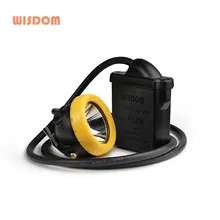An LED light diffuser is engineered to disperse and temper the illumination from LED bulbs, yielding a consistent and mellow light. These diffusers play a pivotal role in a myriad of lighting applications, converting the intense and concentrated beam of LEDs into a diffuse, visually appealing radiance. The science underpinning LED light diffusers is essential for both practical and ornamental lighting settings.
Types of LED Light Diffusers
Diverse models of LED light diffusers cater to specific lighting needs. Linear diffusers are the go-to in commercial and office spaces for their streamlined appearance and uniform light distribution. Round and U-shaped variants are commonplace in domestic and hospitality settings, offering a warm glow that enhances interior aesthetics. For artistic lighting endeavors, specialty diffusers with complex designs take center stage, becoming an integral part of the visual appeal. Each variant is meticulously tailored to fulfill distinct aesthetic and functional lighting demands, underscoring the importance of careful selection in lighting design.
Structure of LED Light Diffusers
The architecture of an LED light diffuser belies its apparent simplicity. Beyond its external casing and lens, certain diffusers integrate sophisticated optical elements like micro-prismatic surfaces or holographic components to customize light dispersion. These features are precisely engineered to direct and scatter light, improving both the extent and evenness of the diffused illumination. The assembly of these parts requires exacting design to guarantee the diffuser's efficacy, balancing luminous quality with the durability of the fixture.
Materials Used in LED Light Diffusers
Materials for LED light diffusers are chosen based on their optical qualities and robustness. PMMA is favored for its superior diffusion capabilities and resistance to UV-induced yellowing. Polycarbonate stands out for its durability and fire-retardant properties, making it ideal for public venues with stringent safety standards. Aluminum alloys are selected not only for their thermal conductivity but also for their recyclability, in line with eco-friendly design practices. The judicious choice of materials ensures that the diffuser excels in performance while adhering to environmental and safety protocols.
Business Usages and Applications
Within the commercial sphere, LED light diffusers are indispensable for industries where lighting is crucial to operations and presentation. Retailers utilize diffusers to foster a welcoming ambiance that can accentuate merchandise and sway consumer behavior. In healthcare, they deliver the soft, non-glaring light required in patient quarters and operating rooms. The hospitality sector depends on them to create the right atmosphere in guest accommodations and eateries, and architects employ them to achieve desired lighting effects that complement spatial design. Each application not only enhances aesthetics but also augments the functionality and comfort of the setting.
Functions of LED Light Diffusers
The roles of LED light diffusers surpass simple light diffusion. They are crucial for the thermal regulation of LED fixtures, with some diffusers doubling as heat sinks. Certain models are equipped with intelligent technology, enabling adjustments in light intensity and color temperature to support human circadian rhythms and boost productivity. In devices that serve multiple purposes, such as humidifiers with integrated LED lighting, the diffuser is key in dispersing light in a manner that complements the primary function of the apparatus.
Features of LED Light Diffusers
The attributes of LED light diffusers are varied, addressing a broad array of requirements. Some are crafted for effortless installation, featuring magnetic backings or clip-on mechanisms for swift updates or exchanges. Others boast resistance to environmental elements like moisture and dust, suited for use in outdoor or industrial settings. Cutting-edge diffusers may come with tunable optics, granting users the ability to refine the lighting ambiance for different occasions or times of day, introducing a dynamic aspect to lighting design.
Benefits of LED Light Diffusers
Employing an LED light diffuser offers manifold benefits. Beyond enhancing light quality, they can markedly curtail energy usage by enabling the effective use of lower-powered LEDs. The scattering of light can also amplify the perceived expanse of a space, rendering environments more open and inviting. For businesses, this can translate to a more agreeable customer experience, potentially leading to longer visits and increased sales. The psychological effects of well-diffused light are significant, as they can elevate mood and comfort, contributing to overall contentment within a space.
How does an LED light diffuser work?
An LED light diffuser operates by distributing the light from LEDs across a broader area. This diffusion process mitigates sharp shadows and diminishes glare, fostering a more agreeable setting for both work and leisure. The material and form of the diffuser are critical in shaping the quality and trajectory of the emitted light.
What are the benefits of using an LED light diffuser?
Utilizing an LED light diffuser yields multiple advantages. It improves visual comfort by mitigating glare, guarantees uniform light distribution, and can aid in energy conservation by allowing fewer LEDs to be used while maintaining the same level of brightness. Moreover, diffusers shield the LEDs from contaminants and physical interference, potentially prolonging the life of the lighting fixture.
How to choose the right LED light diffuser for your project?
Selecting the appropriate LED light diffuser entails evaluating the intended application, the ambiance sought, and the unique features of the space. Considerations such as the material's light transmission rate, the diffuser's geometry, and its compatibility with the LED system are paramount. It's also vital to consider the method of installation and whether the setting demands additional attributes like humidity resistance.









































 浙公网安备 33010002000092号
浙公网安备 33010002000092号 浙B2-20120091-4
浙B2-20120091-4